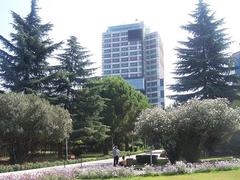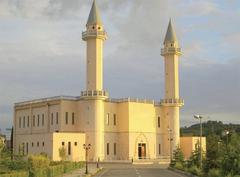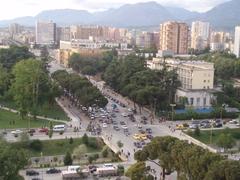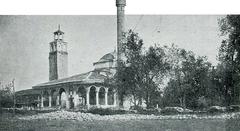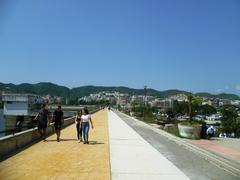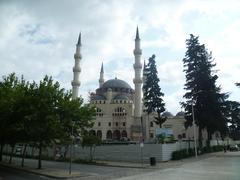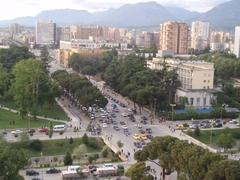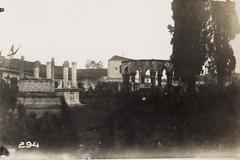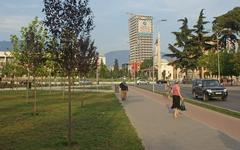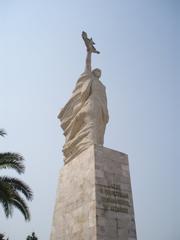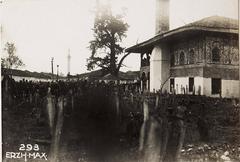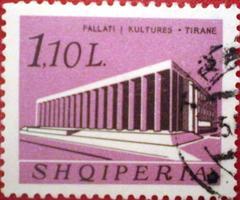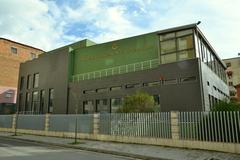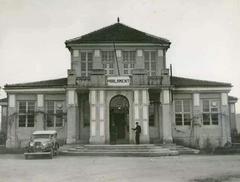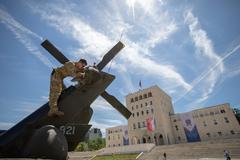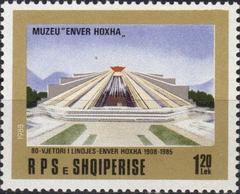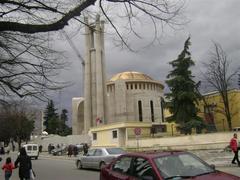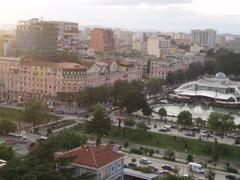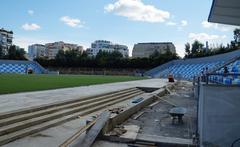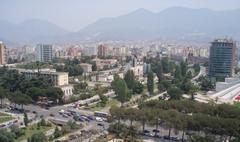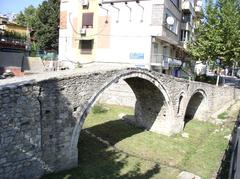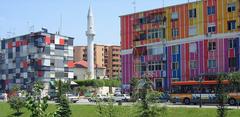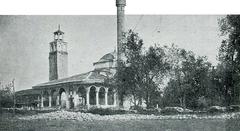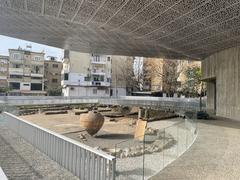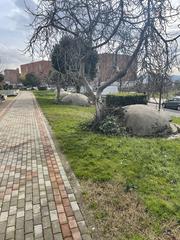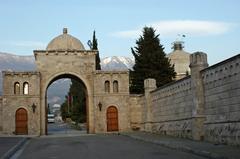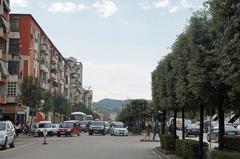Visiting the Prison Hospital of Tirana: Hours, Tickets, and Visitor Information
Date: 15/06/2025
Introduction
The Prison Hospital of Tirana is a unique and historically significant institution in the heart of Albania’s capital. Established in 1930, it stands as the nation’s only dedicated medical facility for inmates, blending the roles of incarceration and specialized healthcare. Over nearly a century, its evolution has mirrored Albania’s tumultuous political history, from its foundational years of modernization, through closure and repurposing under the communist regime, to its post-communist revival as a center for prisoner rehabilitation and healthcare.
While the facility primarily serves as a functioning hospital for inmates and is not generally open to the public, it holds enduring interest for scholars, human rights advocates, and cultural travelers. Occasionally, organized tours and special events offer rare opportunities for respectful engagement with this landmark, set amidst Tirana’s vibrant historical and architectural landscape.
This comprehensive guide details the Prison Hospital’s history, contemporary role, practical visitor information, ethical considerations, and travel tips. It also highlights nearby attractions to enrich your exploration of Tirana’s cultural heritage. For authoritative updates or further research, consult trusted sources such as the Council of Europe on prisoner rights and the Municipality of Tirana’s heritage overview.
Table of Contents
- Introduction
- Historical Overview
- Architectural and Cultural Significance
- Visiting the Prison Hospital of Tirana
- Travel Tips and Nearby Attractions
- Health, Safety, and Practical Advice
- Frequently Asked Questions (FAQ)
- Conclusion and Key Visitor Tips
- References and Further Information
Historical Overview
Early Establishment and Interwar Period (1930–1944)
Founded in 1930, the Prison Hospital of Tirana (Burgu i Spitalit të Tiranës) was created as part of Albania’s drive to modernize its penal and healthcare systems. Its dual function—institutionalizing both incarceration and medical care for inmates—reflected European influences and Tirana’s emergence as the nation’s administrative and cultural center.
Communist Era: Closure and Repression (1944–1991)
During the rule of Enver Hoxha, the facility was closed as the regime shifted focus to punitive incarceration in high-security prisons and labor camps. Medical care in the prison system became secondary to political repression, and the hospital’s legacy was marked by inadequate care and the use of incarceration as a tool for silencing dissent (ecsdev.org).
Post-Communist Transition and Reopening (1991–1998)
Following the collapse of communism, Albania undertook substantial reforms to align its penal system with international standards. The Prison Hospital was reopened in 1998, signaling renewed commitment to prisoner rights and healthcare, supported by partnerships with European institutions.
Contemporary Role (1998–2025)
Today, the Prison Hospital remains the country’s sole dedicated inmate medical facility. It serves prisoners with acute, chronic, and mental health needs, including both pre-trial detainees and convicted inmates. Ongoing reforms aim to further modernize the facility and improve conditions in line with international human rights norms (Council of Europe).
Architectural and Cultural Significance
The Prison Hospital’s utilitarian architecture is emblematic of socialist-era institutional design—marked by an austere façade, high walls, and minimal ornamentation (tirana.al). While its appearance is somber, the building is a powerful cultural symbol, representing both the suffering of political prisoners and Albania’s ongoing journey toward justice and rehabilitation.
Current preservation efforts aim to retain portions of the facility as a memorial or museum to honor those affected by political repression and to educate future generations (link.springer.com).
Visiting the Prison Hospital of Tirana
Access, Hours, and Tickets
General Access:
The Prison Hospital of Tirana is an operational medical facility for inmates and is not open for general tourism. There are no regular visiting hours or ticket sales.
Special Visits:
Academic researchers, journalists, and select groups may arrange guided visits through advance coordination with the Tirana Municipality or through cultural organizations. Such visits are subject to approval and strict protocols (tirana.al).
Virtual Tours:
For the wider public, virtual tours and digital archives are available through the Municipality of Tirana, offering 3D reconstructions and multimedia explorations of the site.
How to Arrange a Visit
- Contact: Reach out to the Tirana Municipality or recognized local tour operators well in advance.
- Documentation: Be prepared to provide a statement of purpose and identification.
- Guided Tours: If approved, visits are guided to ensure respectful and informative experiences.
Accessibility
Located centrally in Tirana, the hospital is near Skanderbeg Square and the National History Museum. The site’s mid-20th-century architecture presents accessibility challenges for those with mobility impairments, so inquire in advance regarding any special needs.
Visitor Conduct and Sensitivity
Cultural and Ethical Considerations
- Approach the site with respect, recognizing its association with trauma and human rights abuse.
- Photography is typically restricted; always seek explicit permission before taking photos.
- Maintain a quiet, respectful demeanor, and avoid any actions that may trivialize the site’s history (pmc.ncbi.nlm.nih.gov).
- Do not engage with staff or patients unless invited, and follow all guidelines from your tour leader.
Travel Tips and Nearby Attractions
Nearby Historical Sites
Enhance your visit by exploring these significant Tirana landmarks:
- Skanderbeg Square: Cultural hub of the city.
- National History Museum: Comprehensive exhibits on Albania’s history.
- Bunk’Art 1 & 2: Museums in former Cold War bunkers, focusing on the communist era (Bunk’Art).
- House of Leaves: Museum of Secret Surveillance (House of Leaves).
Practical Tips
- Arrange visits well in advance through official channels.
- Modest, respectful attire is recommended.
- Carry identification and any necessary permits.
- Combine your visit with a walking tour of the historical district for a fuller cultural experience.
Health, Safety, and Practical Advice
- Tirana is considered safe for visitors, with low violent crime rates (xplrverse.com).
- Medical standards are improving, but travel insurance is advised (albaniavisit.com).
- Follow all health, safety, and legal regulations when visiting operational facilities.
- Emergency numbers: Fire 128, Ambulance 127, Police 129 (tirana.al).
Frequently Asked Questions (FAQ)
Is the Prison Hospital of Tirana open to the public?
No, it is an active medical facility for inmates. Special visits may be arranged for academic or journalistic purposes with prior approval.
How do I arrange a visit?
Contact the Tirana Municipality or specialized tour operators well in advance.
Are there ticket fees?
There are no ticket sales as the site is not a public museum.
Is photography permitted?
Generally, only with explicit permission and in designated areas.
Is the site accessible for those with disabilities?
Accessibility is limited due to architectural constraints; inquire in advance.
What other sites should I visit nearby?
Skanderbeg Square, National History Museum, Bunk’Art museums, and the House of Leaves.
Conclusion and Key Visitor Tips
The Prison Hospital of Tirana is a profound emblem of Albania’s journey from repression to reform. While not broadly open to the public, it remains a site of scholarly and cultural importance, reflecting the nation’s evolving attitudes toward justice, human rights, and remembrance. When visits are possible, they should be arranged through official channels, with a focus on guided tours that honor the sensitivity of the site. Complement your experience by exploring nearby historical landmarks to gain a deeper understanding of Albania’s complex past and ongoing transformation.
For current updates on visiting opportunities and related historical content, download the Audiala app and follow cultural organizations dedicated to Albania’s heritage. Engage with this site thoughtfully to enrich your appreciation of Tirana’s historical landscape and Albania’s continuing commitment to justice and human dignity.
References and Further Information
- Council of Europe - Prisoner Rights in Albania
- Euronews Albania - Prison Reforms
- Municipality of Tirana – Virtual Heritage Tour
- Albania Travel Guide - Tirana History
- Political Repression and the Prison Hospital
- Cultural and Ethical Visitor Considerations
- General Safety for Visitors in 2025
- Albania Visa and Legal Information
- Bunk’Art Museums
- House of Leaves - Museum of Secret Surveillance
